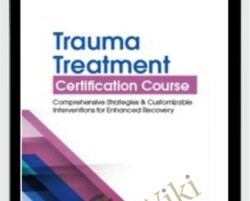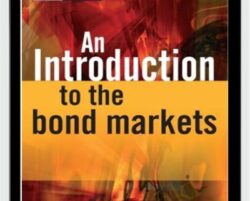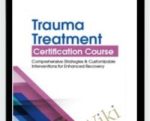Like you, I’ve dealt with some major obstacles to providing effective trauma treatment during my career. How do I make the best use of the growing body of neuroscience research? How can I cut through the clutter of all the possible factors contributing to the trauma and get a clear picture of the issues to address in therapy? How can I tailor my approach to meet the unique needs of each survivor? I looked for a solution and discovered it in an integration of neuroscience, physiology, the three stages of trauma recovery, smaller ingredients taken from larger evidence-based models, and customizable treatment strategies that addressed the unique needs of trauma survivors and their families.This certification course recording presents this integrated and customizable approach to trauma treatment in a manner that is easy to follow and readily adaptable to a variety of settings. You will discover how to use this integrated model as a foundation upon which you can then tailor and apply treatment approaches with which you are already familiar but until now seemed rigid and inflexible. You will be able to move beyond the standard script often given for when and how to apply various strategies, allowing you to focus much more intently on where the trouble spots are in each survivor’s life and what actions to take to resolve them. You will get a road map that will help you to guide each survivor through all the stages in the trauma recovery process.Join me in this exciting, innovative, and evidence-informed recording. Finish feeling invigorated, with a new plan of action for how to use standard models and strategies in new ways to facilitate meaningful and lasting trauma recovery.Analyze the strategies to avoid common pitfalls clinicians may encounter when formulating a trauma diagnosis.Demonstrate the impact of trauma on the brain and behavior for the purpose of client psychoeducation.Analyze how to resolve the disconnect that sometimes exists between evidence-based treatments and the real lives of survivors.Determine the process for applying psychological first aid to ensure safety for clients who have experienced trauma.Apply a flexible conceptual framework to trauma treatment that is sensitive to clients’ needs across several critical domains.Utilize strategies to assist caregivers of young trauma clients with issues of emotional control, attunement, and discipline.Implement a variety of treatment exercises and grounding techniques to help clients develop emotional regulation skills.Integrate cognitive behavioral strategies to transition problematic thoughts of clients into more adaptive, helpful thinking patterns.Evaluate the effectiveness of various trauma treatment strategies used through the three stages of trauma recovery.Incorporate play-based and verbal techniques to assist clients in developing their trauma narrative.Choose appropriate strategies to help clients prepare for future safety issues and trauma triggers.Create a treatment plan for building resiliency in clients to facilitate posttraumatic growth and meaningful recovery.Get Trauma Treatment Certification Course: Comprehensive Strategies and Customizable Interventions for Enhanced Recovery – Robert Lusk, Only Price $175Trauma Impact: Summary of the ResearchDefinitions & conceptsShort term and long term effects (the ACE study)The “good” and “bad” news about trauma exposureLimitations of the researchAssessment and Diagnosis of TraumaAssessment of trauma in children, adolescents and adultsTrauma- & Stressor-Related Disorders in the DSM-5What’s still missing from the DSM-5®?Common pitfalls in diagnosisMy “favorite” diagnosis & why to use it frequentlyAddress Trauma’s Impact on NeurobiologyMajor areas of impactThe 3-part brain (or upstairs/downstairs brain)Neurologically-related issues in trauma survivors”Arrested Development””Hair Trigger” threat responseCognitive, academic, & work-related problemsRelationship problemsThe arousal continuumDissociationEvidence-based Treatments vs. the “Real World”What does “evidence-based” mean in trauma treatment?Components of evidence-based treatmentsThe evidence-based components approachPoints of Intervention in Trauma TreatmentMain entry points: immediate support vs. trauma treatmentPsychological first aidStages of trauma-focused treatmentWhat can you do if your client isn’t emotionally or physically safe?Trauma-Focused Cognitive-Behavioral Therapy: The “Gold Standard”Case examples”Amanda”: 7-year-old girl with sexual abuse and complex family issues”Phil”: mid-30s man whose son died while in his careAddress Critical Domains in Trauma TreatmentThe Physiology DomainSleepNutrition and hydrationSensory needs and interventionsMedications, supplements, & nontraditional interventionsPhysical activity/exercise”Amanda” and “Phil” and the physiology domainThe Relationship DomainThe Attachment, Regulation, & Competency (ARC) model (for youth)Teaching caregiver emotional control (for caregivers of youth)Build attunement (for caregivers of youth)Positive discipline (for caregivers of youth)Build the therapeutic allianceBuild a support networkImplement routines & rituals”Amanda” and the relationship/attachment domain”Phil” and the relationship domainThe Emotional Regulation DomainFeelings identification and expressionUse SUDs scalesGrounding & self-soothing techniquesThe “Comfort Kit”Add attunement!Apply Bruce Perry’s Neurosequential Model of Therapeutics™NMT assessmentsNMT: Interventions by developing age”Amanda” and “Phil” and the emotional regulation domainThe Cognitive DomainTeach and practice problem-solvingTeach and practice mindfulnessAddress distorted cognitions: Most common targets of cognitive processingCognitive processing: how to modify problematic thoughtsUse the Franklin Method”Amanda” and “Phil” and the Cognitive DomainThe Identity DomainFocus on identity and sense of selfBuild on existing strengthsThe Life Book approachExercises to improve identity”Amanda” and “Phil” and the identity domainAdditional Components for the 3 Stages of Trauma RecoveryStage One: Safety & StabilizationEstablish rapportEducation of the client about effects of traumaSafety plansTrauma-specific areas of focusSexual abuse for “Amanda”Triggers for “Phil”Stage Two: Process the Past TraumaPreparationCreate the trauma narrativePlay and verbal-based methods of creating the trauma narrativeProcess of constructing a trauma narrativeWhen is your client finished with Stage Two?Process “Amanda’s” trauma (play therapy “narrative”)Process “Phil’s” trauma (verbal narrative)Stage Three: Reconnection:Consolidate/internalize coping skillsEnhance positive emotionsMaking meaning of the traumaFacilitate reconnection to daily activitiesEnhance current relationshipsPrepare for future safety and triggersPosttraumatic growthReconnection for “Amanda” and “Phil”Resiliency and Protective FactorsResearch on resiliency and protective factorsThe top protective factors for traumaBuild resiliencyGet Trauma Treatment Certification Course: Comprehensive Strategies and Customizable Interventions for Enhanced Recovery – Robert Lusk, Only Price $175Tag: Trauma Treatment Certification Course: Comprehensive Strategies and Customizable Interventions for Enhanced Recovery – Robert Lusk Review. Trauma Treatment Certification Course: Comprehensive Strategies and Customizable Interventions for Enhanced Recovery – Robert Lusk download. Trauma Treatment Certification Course: Comprehensive Strategies and Customizable Interventions for Enhanced Recovery – Robert Lusk discount.
Trauma Treatment Certification Course: Comprehensive Strategies and Customizable Interventions for Enhanced Recovery – Robert Lusk
₹28,386.00






